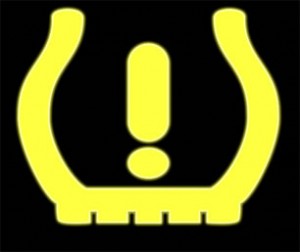Dear Tracy,
My new car has a tire pressure monitoring system and I am not really sure how it works. I have always been in the habit of checking my tire pressure with a manual gauge. Do I no longer need to do this now that I have a TPMS?
-Sylvia P.
Dear Sylvia,
I am always glad to hear when people are in the habit of checking tire pressure! It is great that you have a tire pressure monitoring system (TPMS) in your vehicle, but I would also hang on to that gauge.

The TPMS electronic system installed within your vehicle will continuously monitor the air pressure of all four tires. The TPMS will alert you, probably through a warning light on the dashboard, when your tire pressure falls below the proper limit. There are two different TPMS types – direct and indirect. How your system works depends on the type you have.
A direct TPMS has a pressure sensor on each tire, typically located on the valve stem or band mounted. The sensors used in direct systems are powered by separate lithium batteries, which eventually die. If your new car has a direct system, your regularly scheduled maintenance will include a check to make sure those batteries are in good shape.
Indirect TPMS technology works a little differently. Its monitoring is based on a calculation of factors, starting with the fact that a tire’s over-all diameter is smaller when it is not correctly inflated. A wheel that is smaller will have to spin faster to keep up with the other three. Wheel speed sensors located at each wheel position identify an underinflated tire by comparing the rotational speed of each wheel with the average speed of all four wheels to determine if one is spinning faster than the others. Though the indirect system does not require servicing, it does have some issues, such as the problem that if all four tires are underinflated, the indirect TPMS may not detect a problem.
Now, about that manual gauge. They say that old habits die hard, but in this case, manually checking your tire pressure is a habit you should probably keep, since your TPMS may not be entirely fail-safe. While you may not have to check your tires as often, regular manual tire pressure checks will give you the added measure of assurance that your TPMS is working properly.
